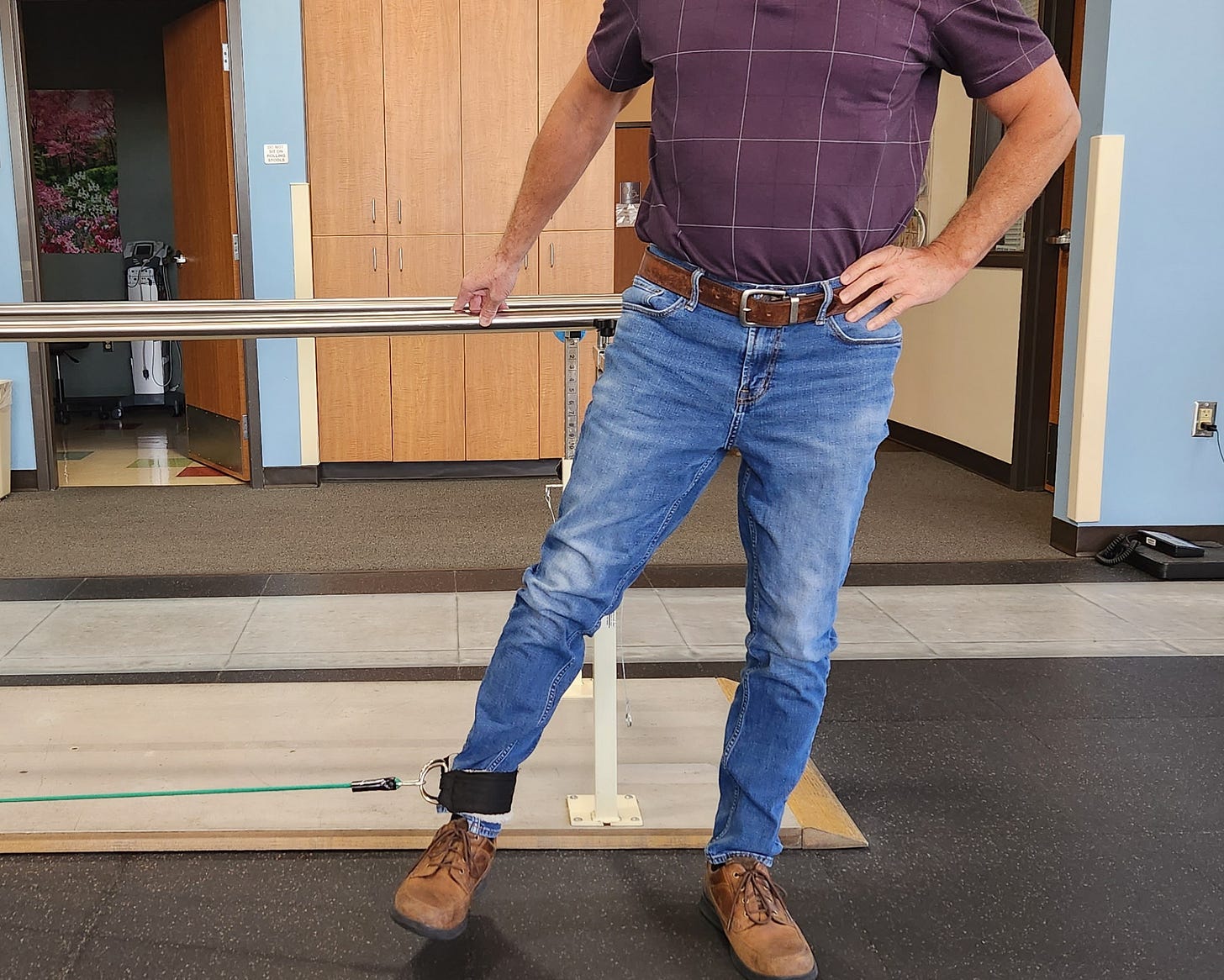This is not medical advice.
When I started working in physical therapy in my 20s, we used to do what’s called modalities, meaning ultrasound, hot packs, estim, etc. Most of the patients laid down for half the session just receiving this feel good stuff instead of performing exercises.
There was one exception, one of my mentors. She had to see 2-4 patients an hour like the rest of us. But she would have a list of 20 exercises that she would teach the patient in the first few sessions and give it to them, and expect them to transition between all of them.
One common exercise that many patients were performing was resisted 4 way ballerina kicks. That’s the name I give it for visualization, but I’m not taking about high kicks, just the picture of perfect posture, balancing on one foot, and low kicks with a straight leg.
Good for both legs
I actually think the exercise is better for the down leg than the kicking leg. The down leg has to balance and stabilize muscles with the foot planted. Muscle contractions with the foot planted are usually harder and more important. That’s how we push off when propelling ourselves forward. And the leg touching the floor has to hold our body upright with hip and trunk muscles.
Speed
The therapist used to perform this exercise quickly, maybe to get in more reps. But I generally prefer people perform this very slowly. We tend to recruit more muscles fibers when we move slowly. Slower speed improves form, improves posture, decreases momentum for cheating the movement.
There are times and good arguments for increased speed, but the majority of people who will benefit from this exercise in a rehab setting need more muscle motor control. The initial strength is not laying down more muscle tissue, that takes months. The initial increase in strength is improved coordination between the brain and muscles fibers.
Other benefits
Improved balance by practicing standing on one leg, and trying to hold your balance while forces move you off center.
Improved joint proprioception (feeling where your joint is in space) feedback. This helps prevent injury.
Improved joint stability. Even though you are moving one of the legs, many of the other muscle contractions are isometric, meaning the muscles fire and hold the knee joints together.
Improved trunk strength and posture.
Helps decrease limping.
I’ve used the ballerina word for years, as I think it helps to improve people’s posture when performing this exercise. You don’t want to lean over to pull the cord, and cheat with your body. You want the hip muscles to do the work.








Great! Barre work, it's fantastic. We're on the same page Mike. I do some barre type stuff with some of my people too.